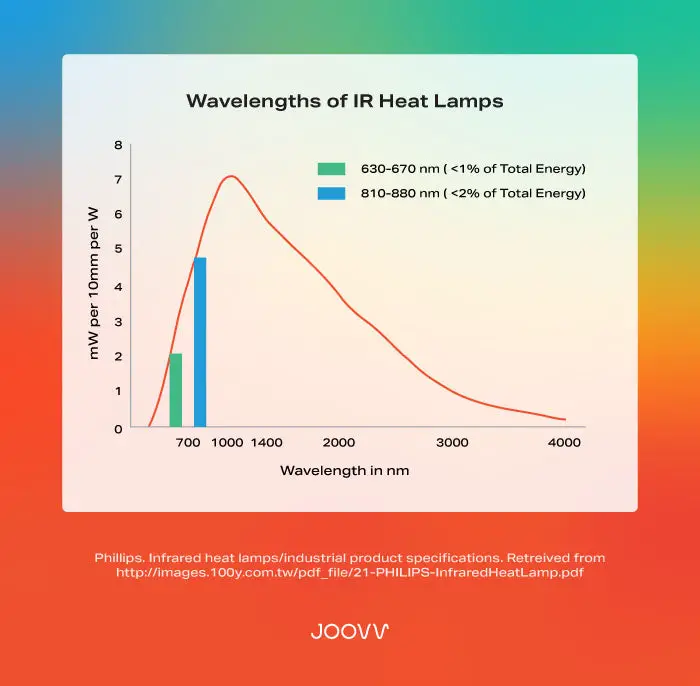When it comes to heating up a space, we all want to make sure we get the best and most efficient form of heat. But when it comes to choosing between infrared and traditional heat, which one is better? In this article, we will explore the differences between the two forms of heat and determine which one is the better choice for your home or business. By the end of this article, you will have a better understanding of the pros and cons of each form of heat and be able to make an informed decision on which one is the better option for your needs.
Infrared heat is better for some applications than traditional heat. Infrared heat is more efficient, requiring less energy to heat the same area. Infrared heat is more evenly distributed and penetrates deeper into the surface of materials such as wood and plastic, making it more effective in heating larger areas. Infrared heat is also more environmentally friendly, with no smoke, dust, or odors, and no air pollutants.
Infrared heat is a great choice for applications such as drying wood, curing paint, and heating outdoor areas. It can also be used to provide supplemental or spot heating in areas where traditional heating is impractical or inefficient. Infrared heat is cost-effective, safe and efficient, and can be used in many different applications.

Contents
What are Infrared and Heat?
Infrared and heat are two forms of energy. Infrared energy is electromagnetic radiation that has a longer wavelength than visible light. Heat is thermal energy that is transferred from one object to another through contact. Both are forms of energy and can be used to heat objects.
Infrared energy is a form of light that is invisible to the human eye. It is typically associated with heat, as it is the energy that is emitted from heated objects. Heat is the transfer of energy from a hot object to a cooler one. Heat is typically transferred through conduction, convection, and radiation.
Difference between Infrared and Heat
The major difference between infrared and heat is the way in which they are produced. Infrared energy is produced when an object is heated, while heat is produced when two objects with different temperatures come into contact.
Infrared energy is invisible to the human eye, while heat is felt when it is transferred from one object to another. Infrared energy is absorbed by objects and converted into thermal energy, while heat is transferred through contact.
Advantages of Infrared
The primary advantage of infrared is that it is an efficient source of heat. Infrared heaters are capable of heating large areas quickly, and they do not need to be in contact with the object that is being heated.
Infrared heaters are also known for their energy efficiency, as they use less energy than traditional heaters. They are also safer, as they do not produce any combustible gases or open flames.
Advantages of Heat
The primary advantage of heat is that it is a reliable source of heat. Traditional heaters are capable of providing consistent heat, and they do not require any special equipment or setup.
Heat is also more cost-effective than infrared, as traditional heaters are typically cheaper than infrared heaters. Heat is also a safer option, as it does not produce any combustible gases or open flames.
Which is Better? Infrared or Heat?
The answer to this question depends on the situation. Infrared is more efficient and energy-efficient than heat, but it may not be practical for certain applications. Heat is a more reliable and cost-effective solution, but it may not be as efficient or energy-efficient as infrared.
Applications of Infrared
Infrared is typically used in applications where speed and efficiency are important. Infrared heaters are often used to quickly heat large areas, and they are also used in industrial processes where precise temperature control is needed.
Infrared heaters are also used in medical applications, such as physical therapy and laser therapy. Infrared heaters are also used in the automotive industry, as they can be used to quickly heat parts for assembly.
Applications of Heat
Heat is typically used in applications where reliability and cost are important. Traditional heaters are often used in residential and commercial buildings to provide consistent, reliable heat.
Heat is also used in industrial processes, as it is a reliable source of heat. Heat is also used in medical applications, such as heating blankets and warming pads.
Related Faq
Question 1: What is infrared?
Answer: Infrared is a form of light or radiation that has a longer wavelength than visible light. It is invisible to the human eye, but can be detected by certain types of cameras or sensors. Infrared radiation is emitted by all objects that have a temperature above absolute zero, and can be used to detect and measure the temperature of objects.
Question 2: How does infrared work?
Answer: Infrared works by using infrared radiation to measure the temperature of an object. Infrared radiation is emitted by all objects that have a temperature above absolute zero, and can be detected by certain types of cameras or sensors. Infrared radiation is absorbed by the object, and then emitted back into the environment. The amount of infrared radiation that is emitted is proportional to the object’s temperature.
Question 3: What are the advantages of using infrared?
Answer: Infrared has several advantages over traditional heating methods. It is more efficient at transferring heat, as it does not require any direct contact between the heat source and the object being heated. It is also more energy-efficient, as it does not require any energy to be wasted in the form of air circulation. Lastly, infrared is safer to use than traditional heating methods, as it does not produce any open flames or hot surfaces.
Question 4: Is infrared better than heat?
Answer: It depends on the application. In some cases, infrared may be more efficient and cost-effective than traditional heating methods. For example, infrared is often used in industrial processes, such as curing materials or drying paint, as it can be more precise and efficient. However, in other cases, traditional heating methods may be more suitable, such as when heating an entire room.
Question 5: What are the disadvantages of using infrared?
Answer: One of the main disadvantages of using infrared is that it is difficult to control. Unlike traditional heating methods, infrared radiation is not easily directed or concentrated, so it can be difficult to regulate the temperature of the heated object. Additionally, infrared radiation can be absorbed by certain materials, such as glass or plastic, which can reduce its effectiveness.
Question 6: What are some applications of infrared?
Answer: Infrared is widely used in a variety of applications, from industrial processes to medical imaging. In industrial processes, infrared is often used to cure materials or dry paint, as it is more precise and efficient than traditional heating methods. In medical imaging, infrared is used to detect changes in body temperature, as well as to diagnose certain medical conditions. Infrared is also used in remote sensing applications, such as satellite imaging and aerial photography.
Heating Pad Vs. Moist Hot Pack Vs. Infrared Heat Review
In conclusion, infrared heating is a great option for many applications, including commercial and residential settings. It is an efficient, cost-effective, and eco-friendly way to heat a space. While traditional heating systems are the more common option, infrared heating is gaining more traction due to its many advantages. In the end, the choice between infrared and traditional heating comes down to personal preference. Both have their own set of pros and cons, so it is important to weigh all the factors before making a decision. With the right knowledge and guidance, you can decide which type of heating is best for you.








